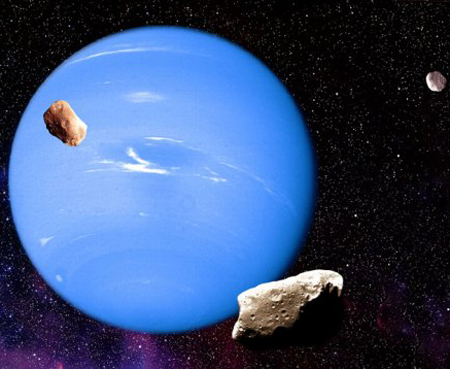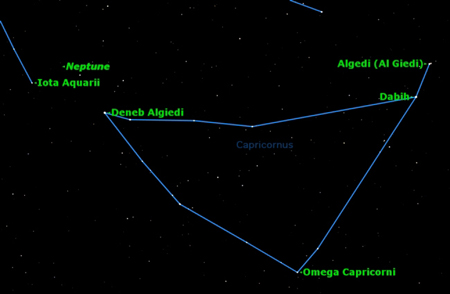The sun, the earth, Sao Hai Vuong formed in rows after 164 years
Today, for the first time in 164 years, Neptune will be in a position to align with the sun and the earth, and that is the location where it is closest to Earth.

Neptune and its satellites.Photo simulation: Space
Space said that this was a special event by Neptune in the same position in 1846. So this planet has just completed the first round-sun journey since it was given by humans. currently 164 years ago. Tonight, if you look at the sky people will see Neptune at the highest position of all time during the last 164 years.
It is coincident that in 1846, Hai Vuong is also aligned with the sun and the earth on August 20.
Neptune is the eighth planet from the sun and is also the third heaviest planet in the solar system. In addition, it is also the planet most far from the sun. The discovery of Neptune is an interesting story. Scientist Galileo Galilei saw Neptune for the first time in 1612 and 1613, when the planet appeared near Jupiter. But he said it was a star.In 1781 English astronomer William Herschel (British) accidentally discovered Uranus while observing the sky.
But then the position of Uranus is not exactly calculated by astronomers. So they suspected that there was another planet near Uranus and its gravity affected Uranus's movement.
In the 40s of the 19th century, Englishman John Couch Adams and Urbain Le Verrier (French) did not work together but made predictions about the location of the hidden planet. However, astronomers are not interested in their prediction.
Then a German astronomer named Johann Galle considered this prediction and discovered a tiny blue planet. That is Neptune. Galle discovered Neptune on September 23, 1846. This led to a fierce debate between John Couch Adams and Urbain Le Verrier about who discovered the Neptune first. In the end both of these astronomers and Galle were recognized as those who found Neptune.

Neptune is located above the left of the Capricorn constellation in the sky
At night. Photo: Space
Up to 30 astronomical units (an astronomical unit equivalent to the distance from the sun to the earth) and a relatively small diameter (49,528 km at the equator), Neptune is a small celestial body and faint in amateur telescopes. Meanwhile humans can observe Uranus with their naked eyes in complete darkness.
To observe Neptune, in the evening you can look up at the Capricorn constellation (with a triangle). It is located on the left of the constellation Sagittarius. The upper left corner of the triangle points towards Neptune. If you look at a small telescope, you will see the planet as a star. Its special feature is blue blue. American astronomer Lawrence Sromovsky, one of the leading experts on Neptune's atmosphere, thinks that the weather on this planet changes according to four seasons, each season lasts about 40 years.
- An Earth-like planet is being formed
- Earth History through images (Part I)
- Life had before Earth formed 5.5 billion years
- Detecting a new satellite of Neptune
- How many kilograms does the Earth weigh and how to weigh it?
- New discovery about the formation of Earth's crust
- The mysterious script of the Hung Vuong period
- The first sign of life on Earth could be bacteria
- Supercontinent Pangea is formed like?
- How does the broom star constitute water on Earth?
- Treasure sword is still shiny after 2700 years of Viet Vuong Cau Tien
- Ocean formed by Comet?
 Van Allen's belt and evidence that the Apollo 11 mission to the Moon was myth
Van Allen's belt and evidence that the Apollo 11 mission to the Moon was myth The levels of civilization in the universe (Kardashev scale)
The levels of civilization in the universe (Kardashev scale) Today Mars, the sun and the Earth are aligned
Today Mars, the sun and the Earth are aligned The Amazon owner announced a secret plan to build a space base for thousands of people
The Amazon owner announced a secret plan to build a space base for thousands of people